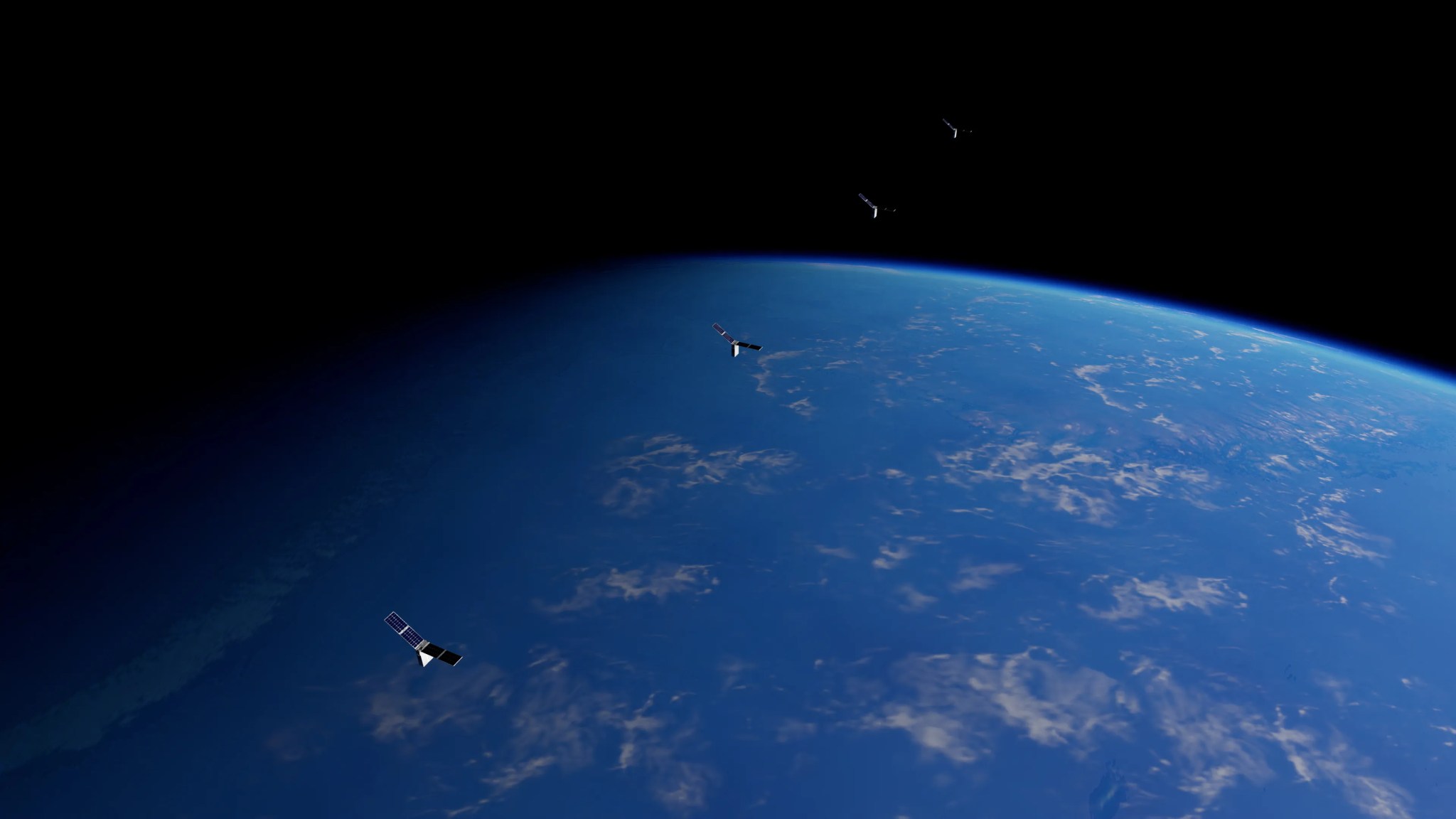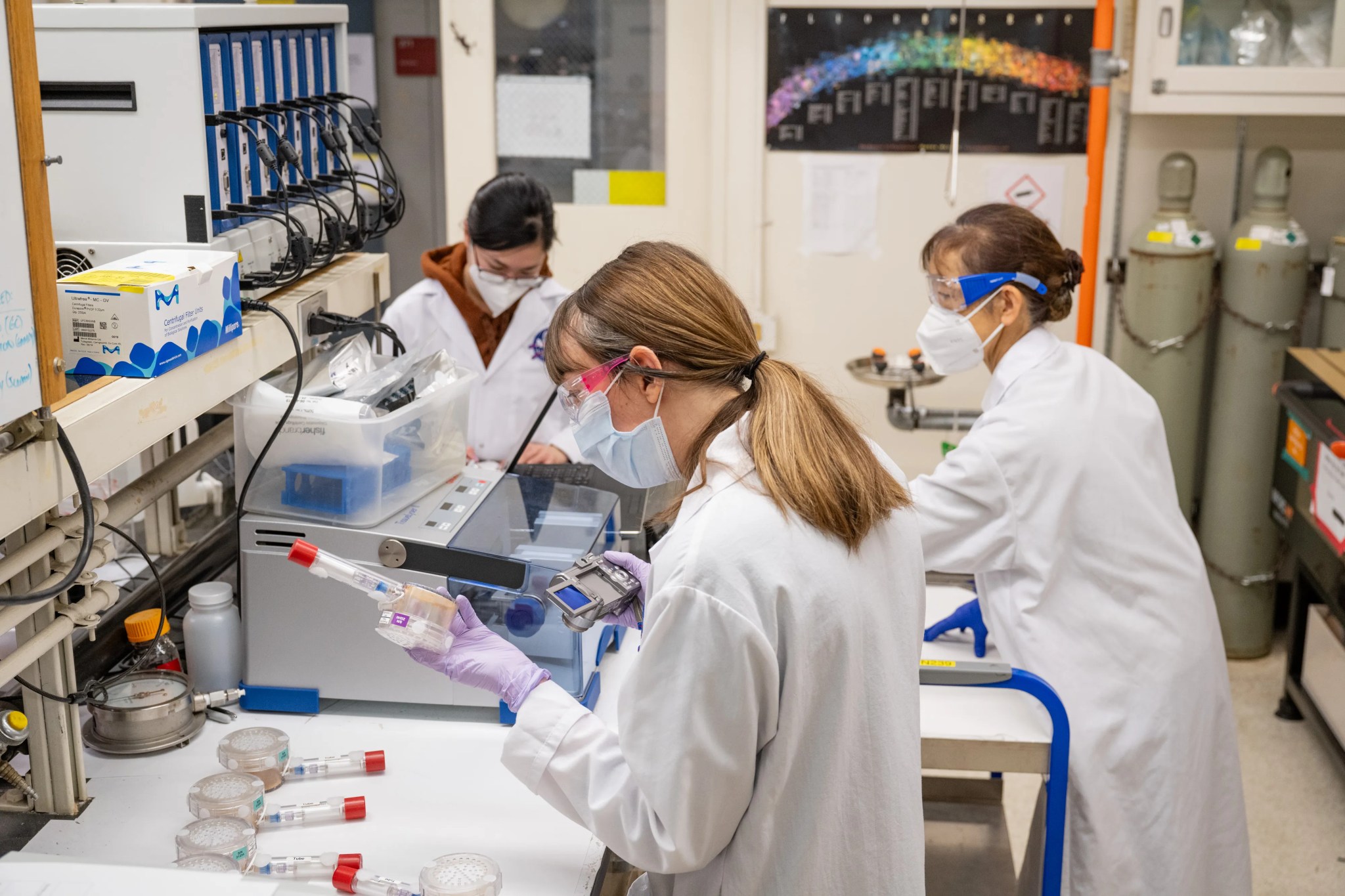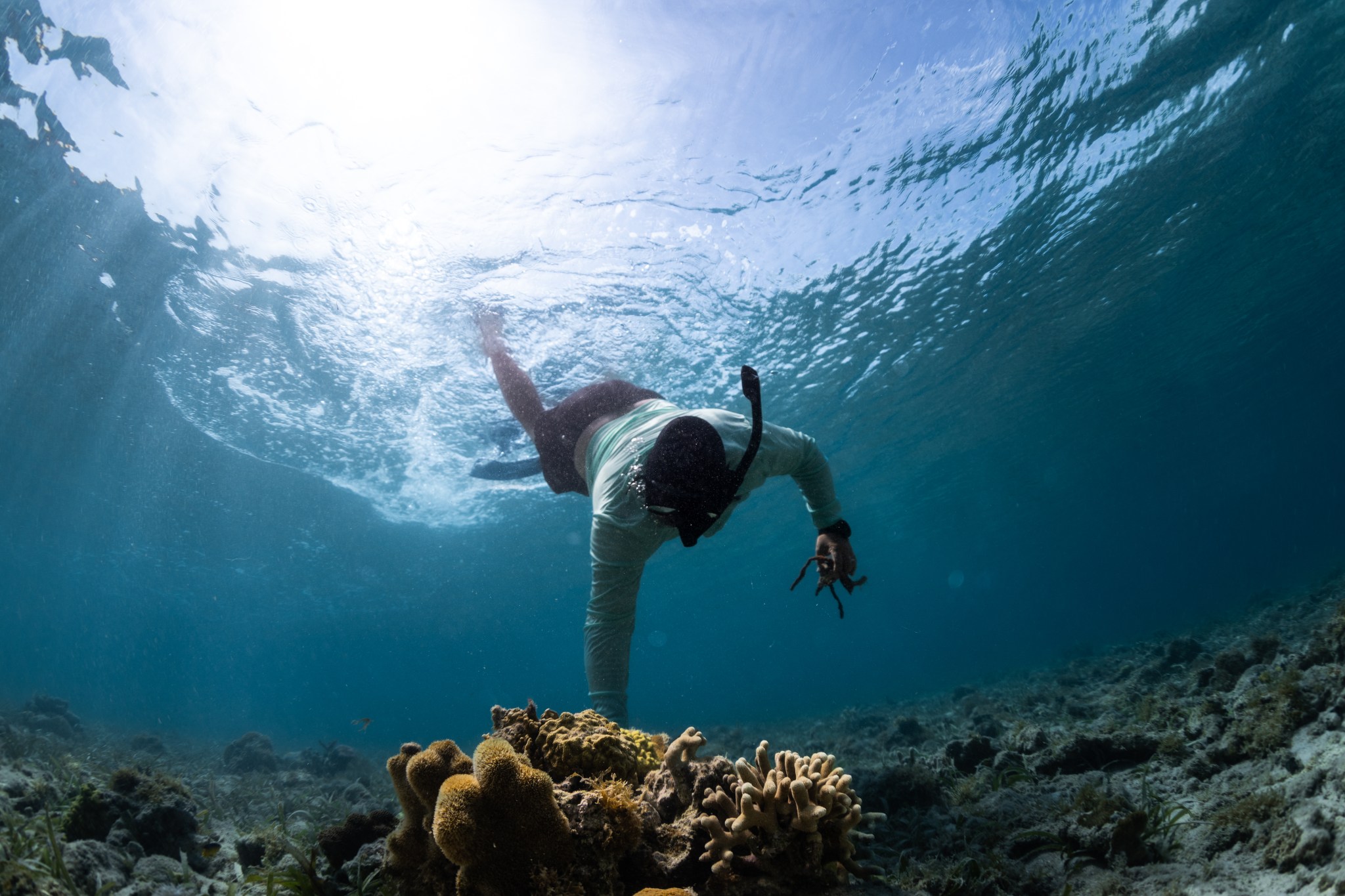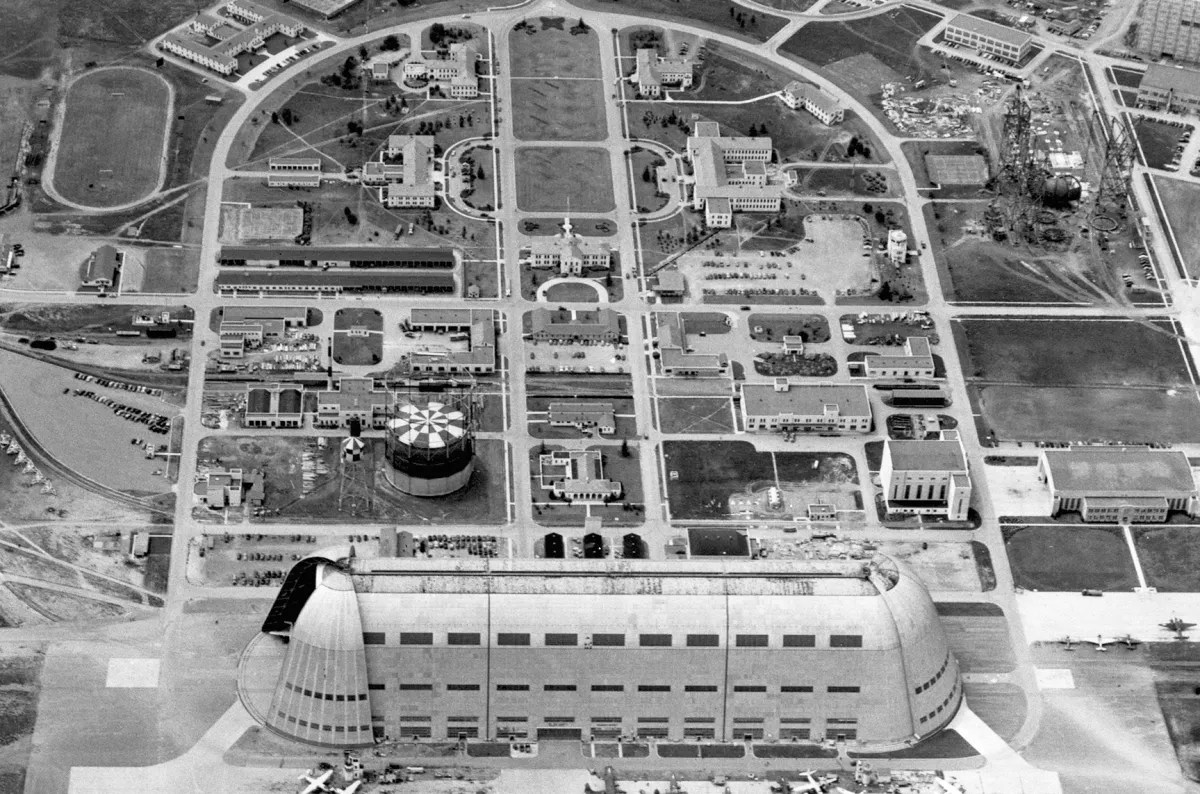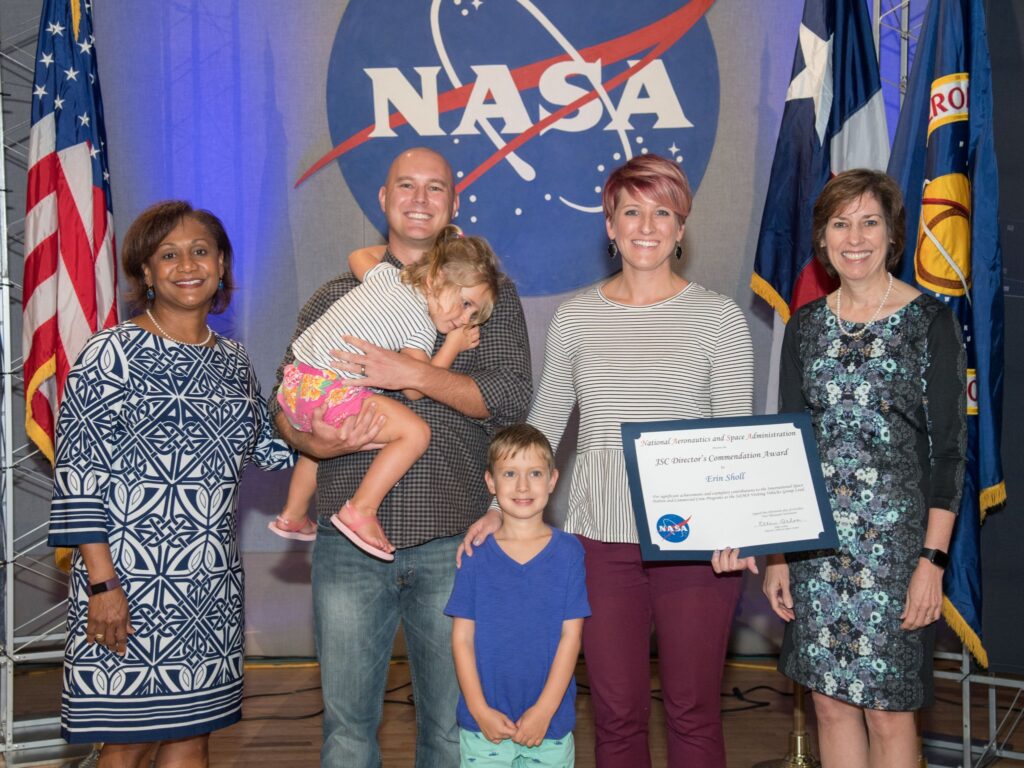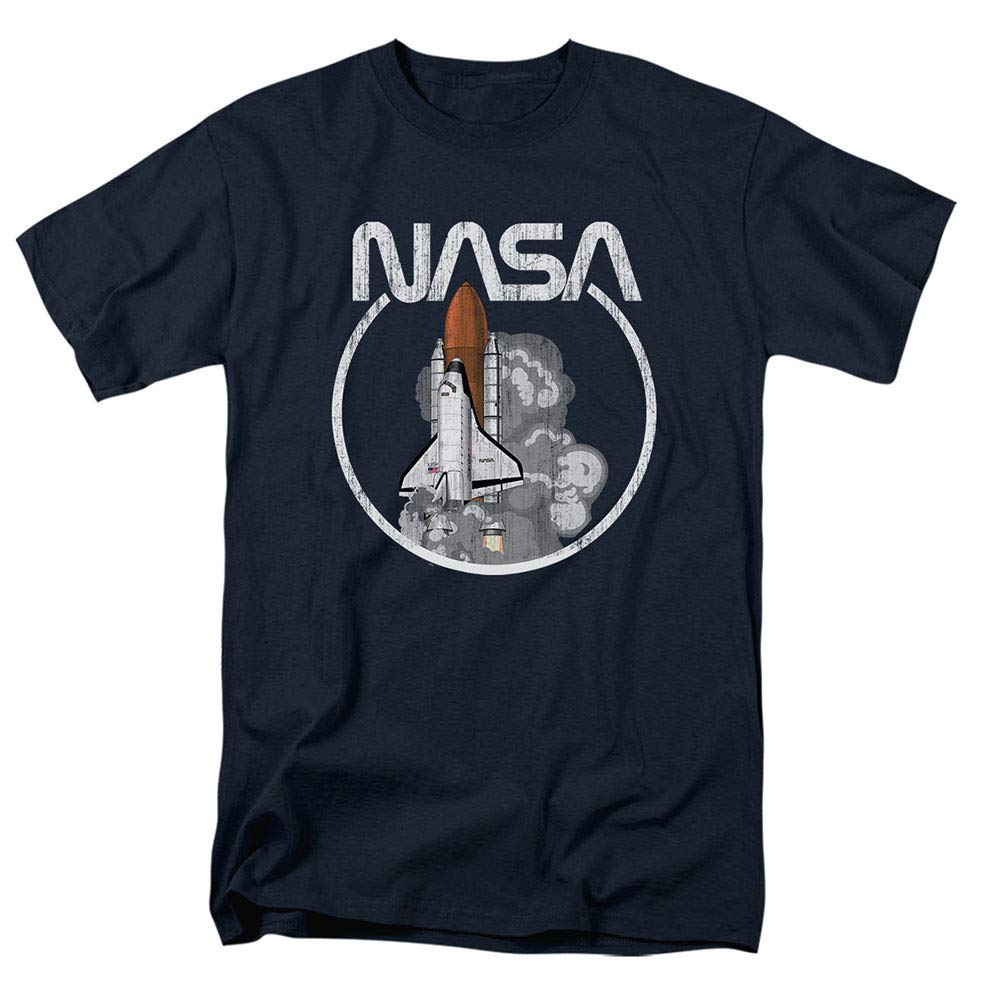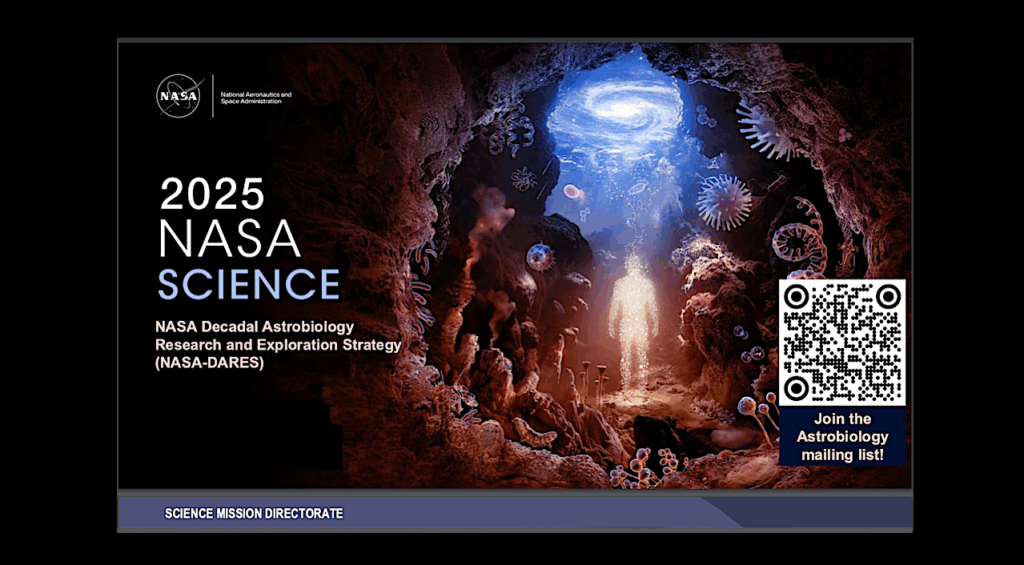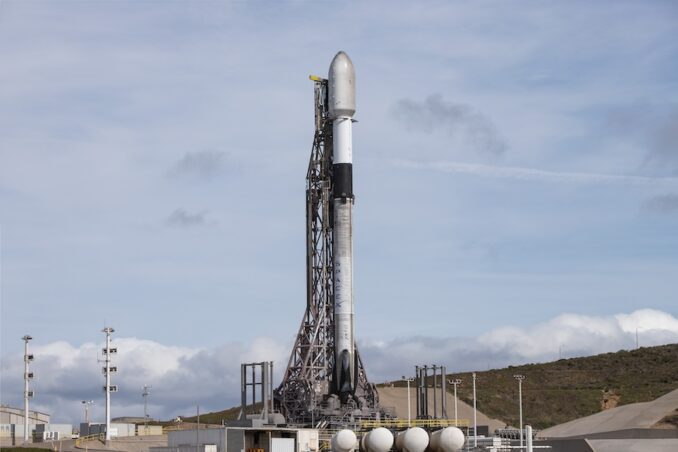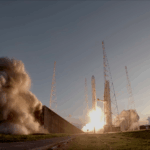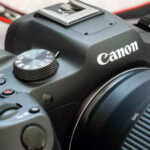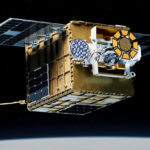Now Reading: NASA Ames Astrogram – December 2024
-
01
NASA Ames Astrogram – December 2024
NASA Ames Astrogram – December 2024

2024 Year in Review – Highlights from NASA in Silicon Valley
by Tiffany Blake
As NASA’s Ames Research Center in California’s Silicon Valley enters its 85th year since its founding, join us as we take a look back at some of our highlights of science, engineering, research, and innovation from 2024.
Ames Arc Jets Play Key Role in Artemis I Orion Spacecraft Heat Shield Findings
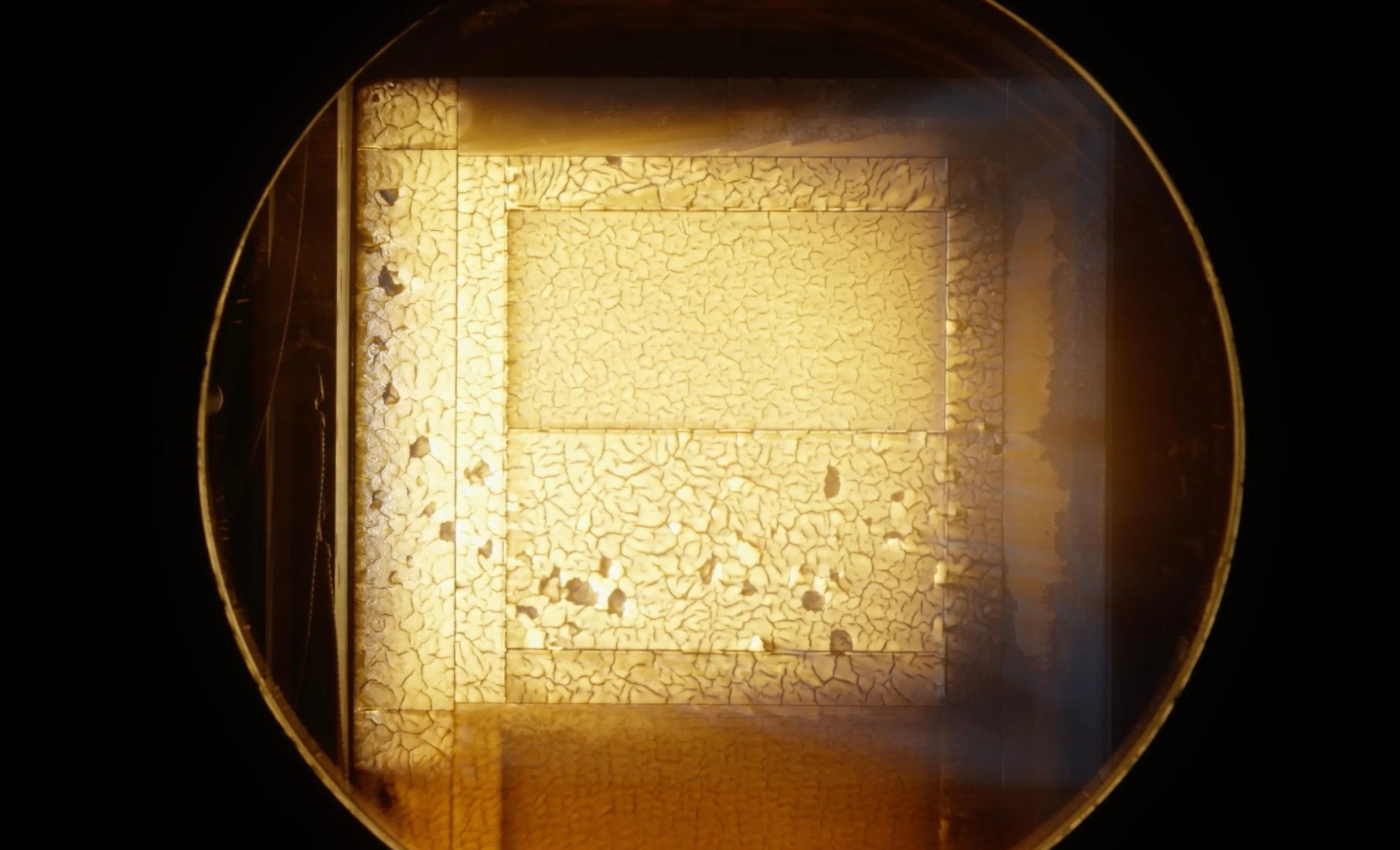
Researchers at Ames were part of the team tasked to better understand and identify the root cause of the unexpected char loss across the Artemis I Orion spacecraft’s heat shield. Using Avcoat material response data from Artemis I, the investigation team was able to replicate the Artemis I entry trajectory environment — a key part of understanding the cause of the issue — inside the arc jet facilities at NASA Ames.
Starling Swarm Completes Primary Mission
After ten months in orbit, the Starling spacecraft swarm successfully demonstrated its primary mission’s key objectives, representing significant achievements in the capability of swarm configurations in low Earth orbit, including distributing and sharing important information and autonomous decision making.
Another Step Forward for BioNutrients
NASA’s BioNutrients entered its fifth year in its mission to investigate how microorganisms can produce on-demand nutrients for astronauts during long-duration space missions. Keeping astronauts healthy is critical and as the project comes to a close, researchers have processed production packs on Earth on the same day astronauts processed production packs in space on the International Space Station to demonstrate that NASA can produce nutrients after at least five years in space, providing confidence it will be capable of supporting crewed missions to Mars.
Hyperwall Upgrade Helps Scientists Interpret Big Data
Ames upgraded its powerful hyperwall system, a 300-square foot wall of LCD screens with over a billion pixels to display supercomputer-scale visualizations of the very large datasets produced by NASA supercomputers and instruments. The hyperwall is just one way researchers can utilize NASA’s high-end computing technology to better understand their data and advance the agency’s missions and research.
Ames Contributions to NASA Artificial Intelligence Efforts

Ames contributes to the agency’s artificial intelligence work through ongoing research and development, agencywide collaboration, and communications efforts. This year, NASA announced David Salvagnini as its inaugural chief artificial intelligence officer and held the first agencywide town hall on artificial intelligence sharing how the agency is safely using and developing artificial intelligence to advance missions and research.
Advanced Composite Solar Sail System Successfully Launches, Deploys Sail
NASA’s Advanced Composite Solar Sail System successfully launched from Māhia, New Zealand, in April, and successfully deployed its sail in August to begin mission operations. The small satellite represents a new future in solar sailing, using lightweight composite booms to support a reflective polymer sail that uses the pressure of sunlight as propulsion.
Understanding Our Planet
In 2024, Ames researchers studied Earth’s oceans and waterways from multiple angles – from supporting NASA’s Plankton, Aerosol, Cloud, ocean Ecosystem, or PACE, mission to bringing students in Puerto Rico experiences in oceanography and the preservation of coral reefs. Working with multiple partners, our scientists and engineers helped inform ecosystem management by joining satellite measurements of Earth with animal tracking data. In collaboration with the U.S. Geological Survey, a NASA team continued testing a specialized instrument package to stay in-the-know about changes in river flow rates.
Revealing the Mysteries of Asteroids in Our Solar System
Ames researchers used a series of supercomputer simulations to reveal a potential new explanation for how the moons of Mars may have formed: The first step, the findings say, may have involved the destruction of an asteroid.
Using NASA’s powerful James Webb Space Telescope, another Ames scientist helped reveal the smallest asteroids ever found in the main asteroid belt.
Ames Helps Emerging Space Companies ‘Take the Heat’
A heat shield material invented and made at Ames helped to safely return a spacecraft containing the first product processed on an autonomous, free-flying, in-space manufacturing platform. February’s re-entry of the spacecraft from Varda Space Industries of El Segundo, California, in partnership with Rocket Lab USA of Long Beach, California, marked the first time a NASA-manufactured thermal protection material, called C-PICA (Conformal Phenolic Impregnated Carbon Ablator), ever returned from space.
Team Continues to Move Forward with Mission to Learn More about Our Star
HelioSwarm’s swarm of nine spacecraft will provide deeper insights into our universe and offer critical information to help protect astronauts, satellites, and communications signals such as GPS. The mission team continues to work toward launching in 2029.
CAPSTONE Continues to Chart a New Path Around the Moon

The microwave sized CubeSat, CAPSTONE, continues to fly in a cis-lunar near rectilinear halo orbit after launching in 2022. Flying in this unique orbit continues to pave the way for future spacecraft and Gateway, a Moon-orbiting outpost that is part of NASA’s Artemis campaign, as the team continues to collect data.
NASA Moves Drone Package Delivery Industry Closer to Reality

NASA’s uncrewed aircraft system traffic management concepts paved the way for newly-approved package delivery drone flights in the Dallas area.
NASA’s uncrewed aircraft system traffic management concepts paved the way for newly-approved package delivery drone flights in the Dallas area.
NASA Technologies Streamline Air Traffic Management Systems

Managing our busy airspace is a complex and important issue, ensuring reliable and efficient movement of commercial and public air traffic as well as autonomous vehicles. NASA, in partnership with AeroVironment and Aerostar, demonstrated a first-of-its-kind air traffic management concept that could pave the way for aircraft to safely operate at higher altitudes. The agency also saw continued fuel savings and reduction in commercial flight delays at Dallas Fort-Worth Airport, thanks to a NASA-developed tool that allows flight coordinators to identify more efficient, alternative takeoff routes.
Small Spacecraft Gathers Big Solar Storm Data from Deep Space
BioSentinel – a small satellite about the size of a cereal box – is currently more than 30 million miles from Earth, orbiting our Sun. After launching aboard NASA’s Artemis I more than two years ago, BioSentinel continues to collect valuable information for scientists trying to understand how solar radiation storms move through space and where their effects – and potential impacts on life beyond Earth – are most intense. In May 2024, the satellite was exposed to a coronal mass ejection without the protection of our planet’s magnetic field and gathered measurements of hazardous solar particles in deep space during a solar storm.
NASA, FAA Partner to Develop New Wildland Fire Technologies
NASA researchers continued to develop and test airspace management technologies to enable remotely-piloted aircraft to fight and monitor wildland fires 24 hours a day.
The Advanced Capabilities for Emergency Response Operations (ACERO) project seeks to use drones and advanced aviation technologies to improve wildland fire coordination and operations.
NASA and Forest Service Use Balloon to Help Firefighters Communicate

The Strategic Tactical Radio and Tactical Overwatch (STRATO) technology is a collaborative effort to use high-altitude balloons to improve real-time communications among firefighters battling wildland fires. Providing cellular communication from above can improve firefighter safety and firefighting efficiency.
A Fully Reimagined Visitor Center
The NASA Ames Visitor Center at Chabot Space & Science Center in Oakland, California includes a fully reimagined 360-degree experience, featuring new exhibits, models, and more. An interactive exhibit puts visitors in the shoes of a NASA Ames scientist, designing and testing rovers, planes, and robots for space exploration.
Ames Collaborations in the Community

NASA astronauts, scientists, and researchers, and leadership from the University of California, San Francisco (UCSF) met with cancer patients and gathered in a discussion about potential research opportunities and collaborations as part of President Biden and First Lady Jill Biden’s Cancer Moonshot initiative on Oct. 4. During the visit with patients, NASA astronaut Yvonne Cagle and former astronaut Kenneth Cockrell answered questions about spaceflight and life in space.
Ames and the University of California, Berkeley, expanded their partnership, organizing workshops to exchange on their areas of technical expertise, including in Advanced Air Mobility, and to develop ideas for the Berkeley Space Center, an innovation hub proposed for development at Ames’ NASA Research Park. Under a new agreement, NASA also will host supercomputing resources for UC Berkeley, supporting the development of novel computing algorithms and software for a wide variety of scientific and technology areas.
NASA’s Ames Research Center Celebrates 85 Years of Innovation
by Rachel Hoover
Ames Research Center in California’s Silicon Valley pre-dates a lot of things. The center existed before NASA – the very space and aeronautics agency it’s a critical part of today. And of all the marvelous advancements in science and technology that have fundamentally changed our lives over the last 85 years since its founding, one aspect has remained steadfast; an enduring commitment to what’s known by some on-center simply as, “an atmosphere of freedom.”
Years before breaking ground at the site that would one day become home to the world’s preeminent wind tunnels, supercomputers, simulators, and brightest minds solving some of the world’s toughest challenges, Joseph Sweetman Ames, the center’s namesake, described a sentiment that would guide decades of innovation and research:
“My hope is that you have learned or are learning a love of freedom of thought and are convinced that life is worthwhile only in such an atmosphere,” he said in an address to the graduates of Johns Hopkins University in June 1935.
That spirit and the people it attracted and retained are a crucial part of how Ames, along with other N.A.C.A. research centers, ultimately made technological breakthroughs that enabled humanity’s first steps on the Moon, the safe return of spacecraft through Earth’s atmosphere, and many other discoveries that benefit our day-to-day lives.
“In the context of my work, an atmosphere of freedom means the freedom to pursue high-risk, high-reward, innovative ideas that may take time to fully develop and — most importantly — the opportunity to put them into practice for the benefit of all,” said Edward Balaban, a researcher at Ames specializing in artificial intelligence, robotics, and advanced mission concepts.
Balaban’s career at Ames has involved a variety of projects at different stages of development – from early concept to flight-ready – including experimenting with different ways to create super-sized space telescopes in space and using artificial intelligence to help guide the path a rover might take to maximize off-world science results. Like many Ames researchers over the years, Balaban shared that his experience has involved deep collaborations across science and engineering disciplines with colleagues all over the center, as well as commercial and academic partners in Silicon Valley where Ames is nestled and beyond. This is a tradition that runs deep at Ames and has helped lead to entirely new fields of study and seeded many companies and spinoffs.
“In the fields of aeronautics and space exploration the cost of entry can be quite high. For commercial enterprises and universities pursuing longer term ideas and putting them into practice often means partnering up with an organization such as NASA that has the scale and multi-disciplinary expertise to mature these ideas for real-world applications,” added Balaban.
“Certainly, the topics of inquiry, the academic freedom, and the benefit to the public good are what has kept me at Ames,” reflected Ross Beyer, a planetary scientist with the SETI Institute at Ames. “There’s not a lot of commercial incentive to study other planets, for example, but maybe there will be soon. In the meantime, only with government funding and agencies like NASA can we develop missions to explore the unknown in order to make important fundamental science discoveries and broadly share them.”
For Beyer, his boundary-breaking moment came when he searched – and found – software engineers at Ames capable and passionate about open-source software to generate accurate, high-resolution, texture-mapped, 3D terrain models from stereo image pairs. He and other teams of NASA scientists have since applied that software to study and better understand everything from changes in snow and ice characteristics on Earth, as well as features like craters, mountains, and caves on Mars or the Moon. This capability is part of the Artemis campaign, through which NASA will establish a long-term presence at the Moon for scientific exploration with commercial and international partners. The mission is to learn how to live and work away from home, promote the peaceful use of space, and prepare for future human exploration of Mars.
“As NASA and private companies send missions to the Moon, they need to plan landing sites and understand the local environment, and our software is freely available for anyone to use,” Beyer said. “Years ago, our management could easily have said ‘No, let’s keep this software to ourselves; it gives us a competitive advantage.’ They didn’t, and I believe that NASA writ large allows you to work on things and share those things and not hold them back.”
When looking forward to what the next 85 years might bring, researchers shared a belief that advancements in technology and opportunities to innovate are as expansive as space itself, but like all living things, they need a healthy atmosphere to thrive. Balaban offered, “This freedom to innovate is precious and cannot be taken for granted. It can easily fall victim if left unprotected. It is absolutely critical to retain it going forward, to ensure our nation’s continuing vitality and the strength of the other freedoms we enjoy.”
The Retirement of the Astrogram Newsletter
by Astrid Albaugh
For 66 years, the Astrogram has told the story of NASA’s Ames Research Center. Over those six-plus decades, the newsletter has documented hundreds of missions led by Ames, the progression of Hangar One’s reclamation, space shuttle launches with Ames’ payloads aboard them, countless VIP visits, and everything in between.
Ames published the first edition of the Astrogram in October 1958, coinciding with the transition of the center from its original incarnation as the National Advisory Committee for Aeronautics Ames Aeronautical Laboratory to a National Aeronautics and Space Administration (NASA) research center.
The newsletter has evolved over time, alongside the center. From October 1958 through January 2016, the Astrogram was published in print, before a digital edition was developed. In January 2016, the Astrogram transitioned to a digital-only format. The number of pages for each edition varied, sometimes 10 pages up to 24 pages in length. Below are examples of some of the Astrogram issues from over the years.
I have served as the editor of the Astrogram since February 1998. I had quite the busy schedule back then, as I was working full time, raising two young children, and attending school on the week nights, twice a week as well as on Saturdays to complete my BS degree in behavioral sciences. In my present position at the time, I worked in the educational publications area within the Office of External Affairs, now the Office of Communications. In that position, I had to ensure that all educational requests from teachers, students, and the general public, both domestic and foreign. I also was the editor of the monthly “Parents at Ames” newsletter, which provided parents of young children on center with insight and suggestions from contributing employees and myself on how to better meet the challenges of work and family life. The newsletter offered information on parenting issues, such as daycare, balancing work schedules, and related topics.
Over the past quarter century, it has been an interesting, and sometimes quite challenging, task for me to capture the breadth and depth of Ames’ story and ensure that we always published the newsletter on time. I still remember trekking over to the center’s imaging office to review the physical negatives and images that the Ames photographers had taken of events onsite and select the most compelling photos. I used a very early version of visual design software to craft the layout. When the paper was completed, I would file it onto a CD and then hand it to the courier who had driven from the San Francisco printshop to pick it up from me. Once in awhile, someone would request to have an additional feature added, requiring multiple trips up Highway 101 and back. Sometimes I’d come in on the weekends to work on the paper, due to late submissions, much to the chagrin of my kids.
It has been a pleasure serving as the editor over the past quarter century, almost as many years as my kids are old. A person once asked me if I had changed my name to Astrid since it’s so like the word Astrogram. Any relationship between the newsletter and my name is simply serendipity. I have enjoyed being behind the scenes, mostly working diligently at my computer. Many at Ames know my name because of the newsletter but may have never met me in person. It’s been amusing sometimes when I encounter someone who can’t put a finger as to why they knew my name but didn’t recognize me in person. Their usual response when they realized why they know me was, “Ah, Astrid of the Astrogram.” Here are some additional Astrogram front pages from 1998 and before.
Just as NASA innovates, the content of the Astrogram has to innovate as well. Many of the stories that you used to read in the Astrogram, you can now find here on our NASA Ames Research Center web page. If you would like to access past, archived issues of the Astrogram, going back to 1958, please consult the Ames Research Center Archives. I will continue to help tell Ames’s story, just using new platforms.
Whether this is your first issue or you have been an Astrogram supporter for decades, thank you for reading!
– Astrid of the Astrogram officially signing off
Stay Informed With the Latest & Most Important News
Previous Post
Next Post
-
 012024 in Review: Highlights from NASA in Silicon Valley
012024 in Review: Highlights from NASA in Silicon Valley -
 02Panasonic Leica Summilux DG 15mm f/1.7 ASPH review
02Panasonic Leica Summilux DG 15mm f/1.7 ASPH review -
 03From Polymerization-Enabled Folding and Assembly to Chemical Evolution: Key Processes for Emergence of Functional Polymers in the Origin of Life
03From Polymerization-Enabled Folding and Assembly to Chemical Evolution: Key Processes for Emergence of Functional Polymers in the Origin of Life -
 04How New NASA, India Earth Satellite NISAR Will See Earth
04How New NASA, India Earth Satellite NISAR Will See Earth -
 05And Thus Begins A New Year For Life On Earth
05And Thus Begins A New Year For Life On Earth -
 06Astronomy Activation Ambassadors: A New Era
06Astronomy Activation Ambassadors: A New Era -
07SpaceX launch surge helps set new global launch record in 2024



